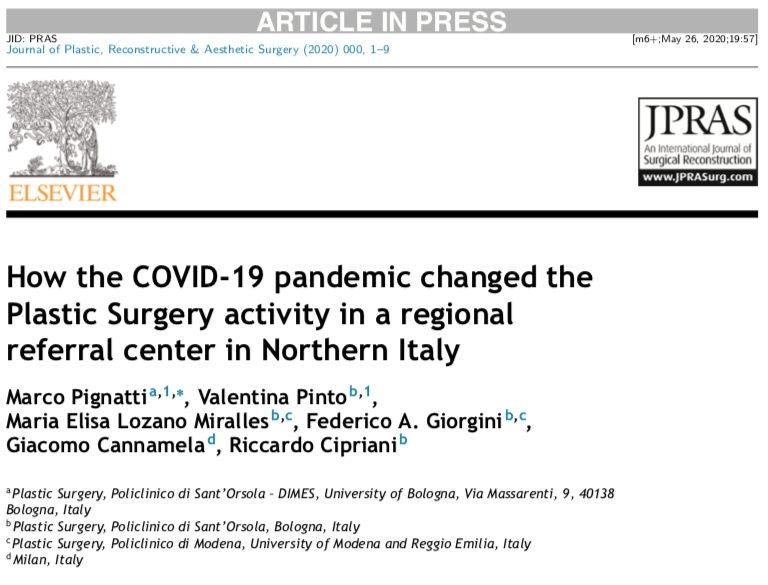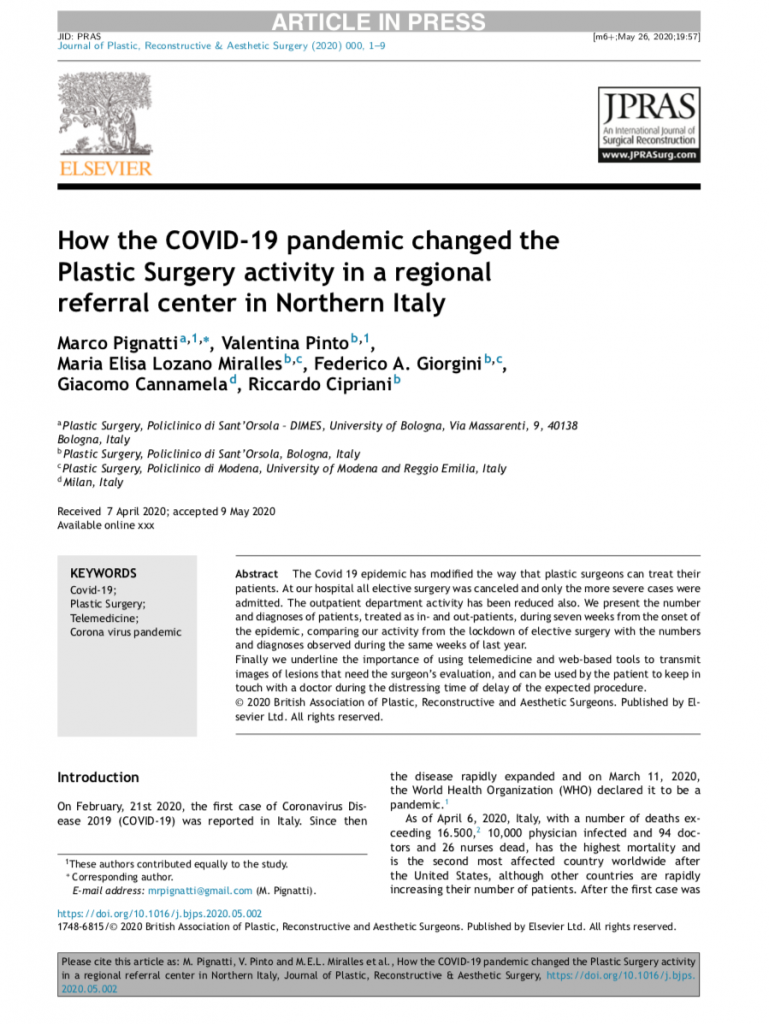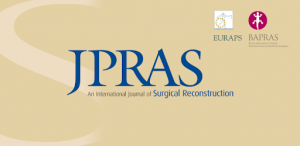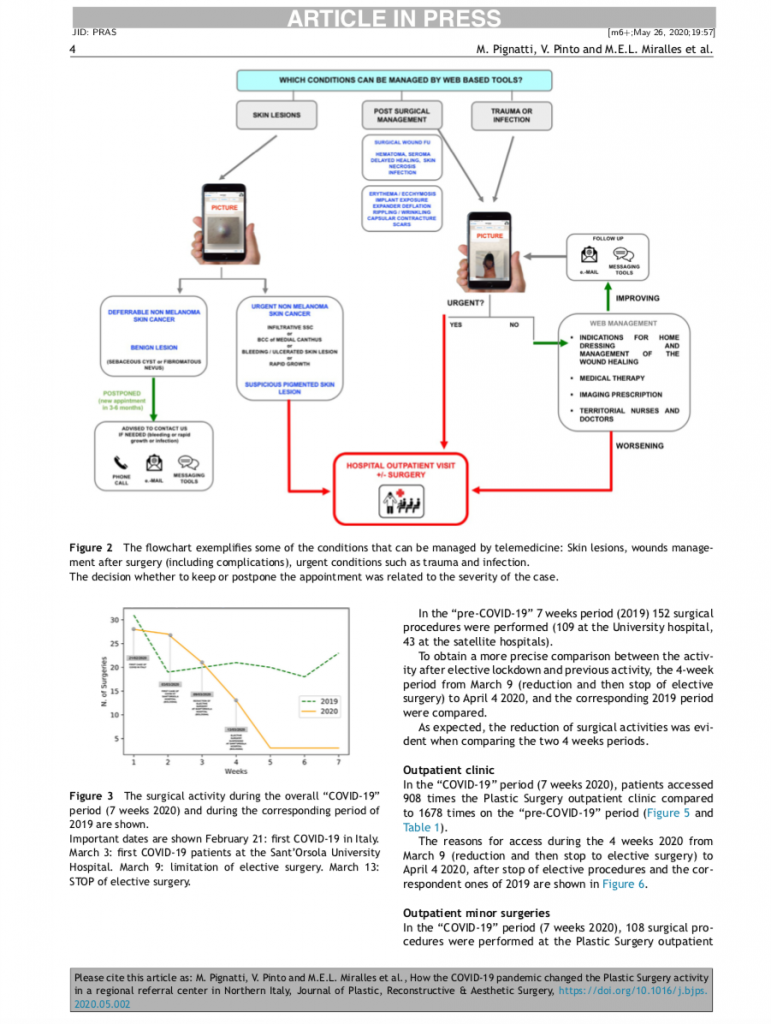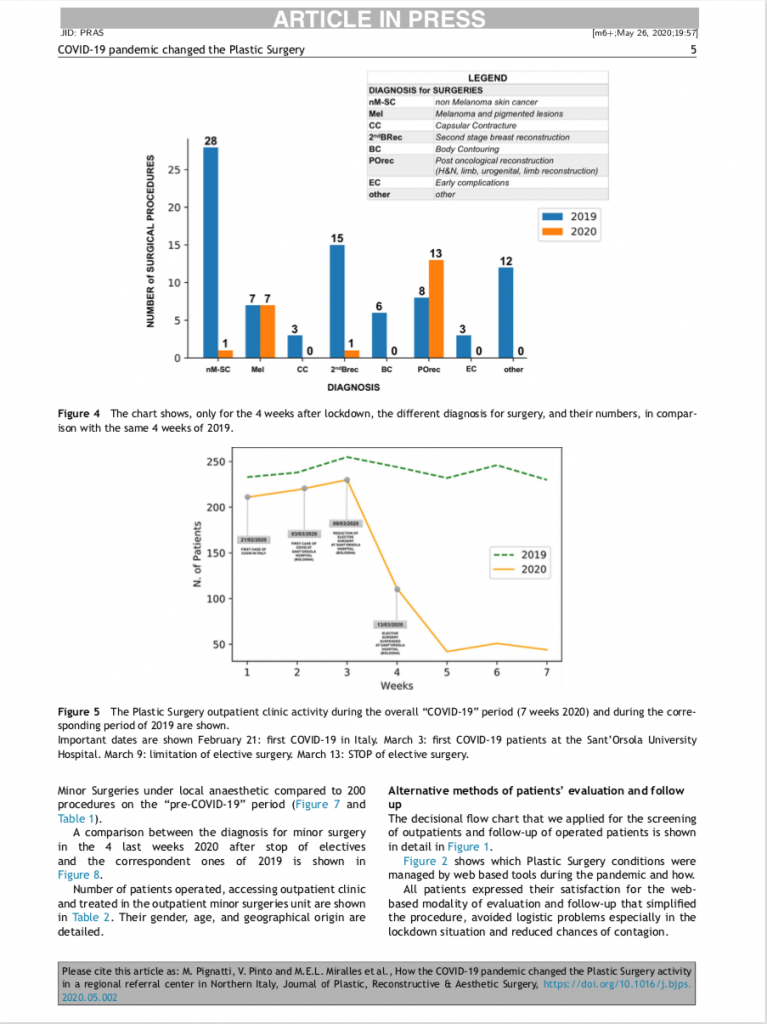Pandemia di Coronavirus
Pubblicato online: 15 Maggio 2020
Una delle riviste scientifiche più autorevoli per la Chirurgia Plastica, JPRAS, ha pubblicato un nostro studio sulla riorganizzazione dell’attività nel reparto di Chirurgia Plastica del Policlinico Sant’Orsola di Bologna, a causa della pandemia di Coronavirus.
Articolo Completo:
https://www.jprasurg.com/article/S1748-6815(20)30182-0/fulltext
DOI: https://doi.org/10.1016/j.bjps.2020.05.002
Marco Pignatti a,1
Valentina Pinto b,1
Maria Elisa Lozano Miralles b,c
Federico A. Giorgini b,c
Giacomo Cannamela d,
Riccardo Cipriani b
a – Plastic Surgery, Policlinico di Sant’Orsola – DIMES, University of Bologna,
Via Massarenti, 9, 40138 Bologna, Italy
b – Plastic Surgery, Policlinico di Sant’Orsola, Bologna, Italy
c – Plastic Surgery, Policlinico di Modena, University of Modena and Reggio Emilia, Italy
d – Milan, Italy
1 – These authors contributed equally to the study.
Il periodo COVID-19 ha portato molti cambiamenti anche sulla riorganizzazione dell’attività nel reparto di Chirurgia Plastica. Tra questi, ci ha costretto a limitare interventi e visite solo per patologie tumorali urgenti. In questa urgente e delicata riorganizzazione non abbiamo abbandonato i pazienti. Per seguirli, minimizzando gli accessi in Ospedale, abbiamo utilizzato la Telemedicina con email, whatsapp e telefono.
Abstract
The Covid 19 epidemic has modified the way that plastic surgeons can treat their patients. At our hospital all elective surgery was canceled and only the more severe cases were admitted. The outpatient department activity has been reduced also. We present the number and diagnoses of patients, treated as in- and out-patients, during seven weeks from the onset of the epidemic, comparing our activity from the lockdown of elective surgery with the numbers and diagnoses observed during the same weeks of last year.
Finally we underline the importance of using telemedicine and web-based tools to transmit images of lesions that need the surgeon’s evaluation, and can be used by the patient to keep in touch with a doctor during the distressing time of delay of the expected procedure.
